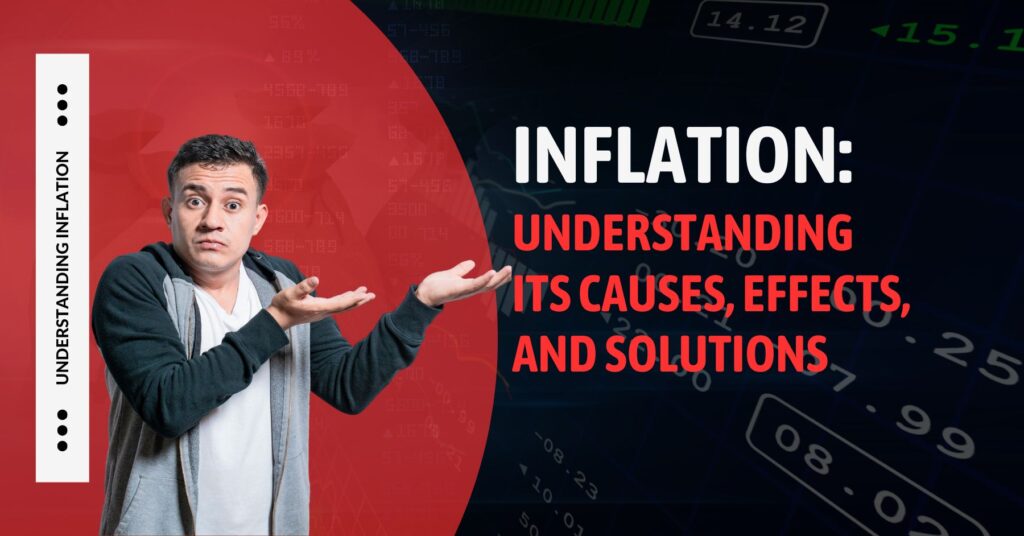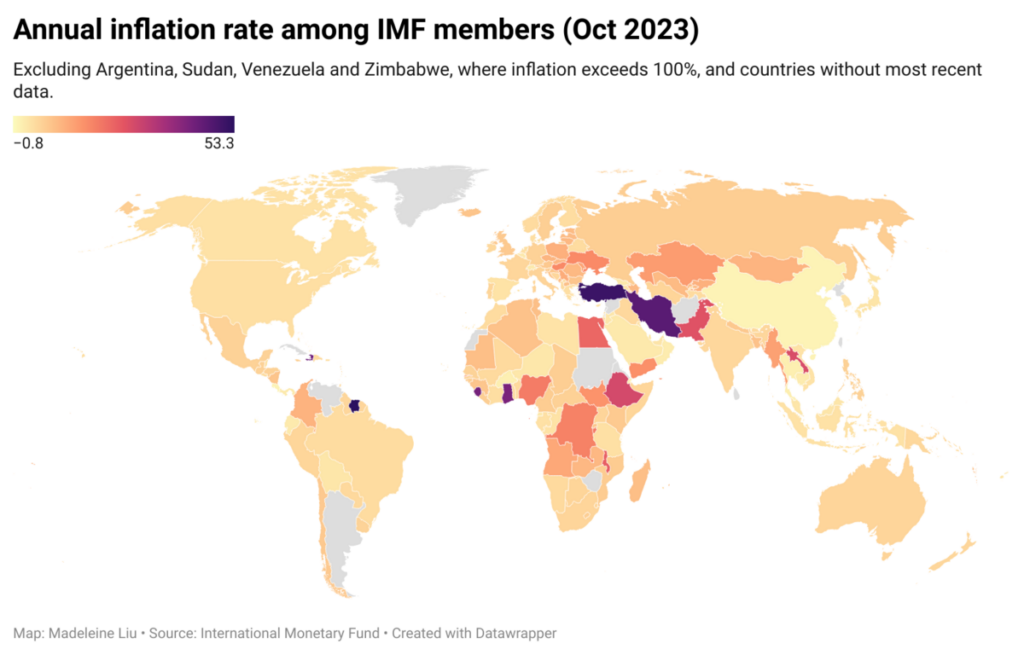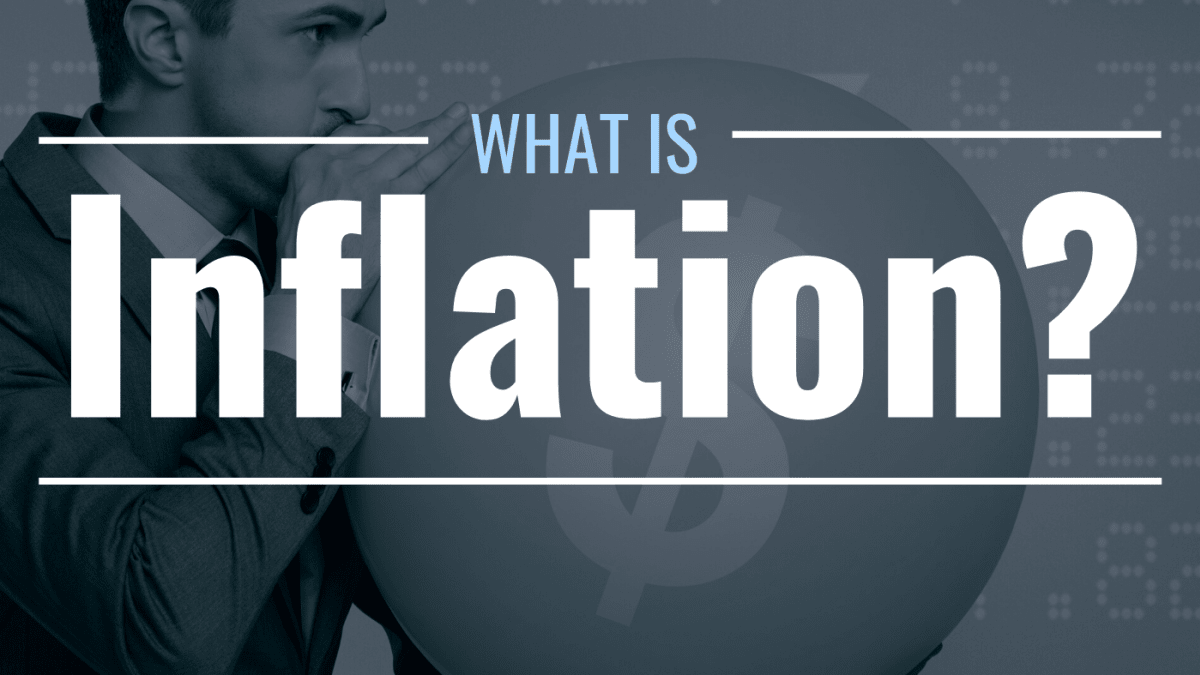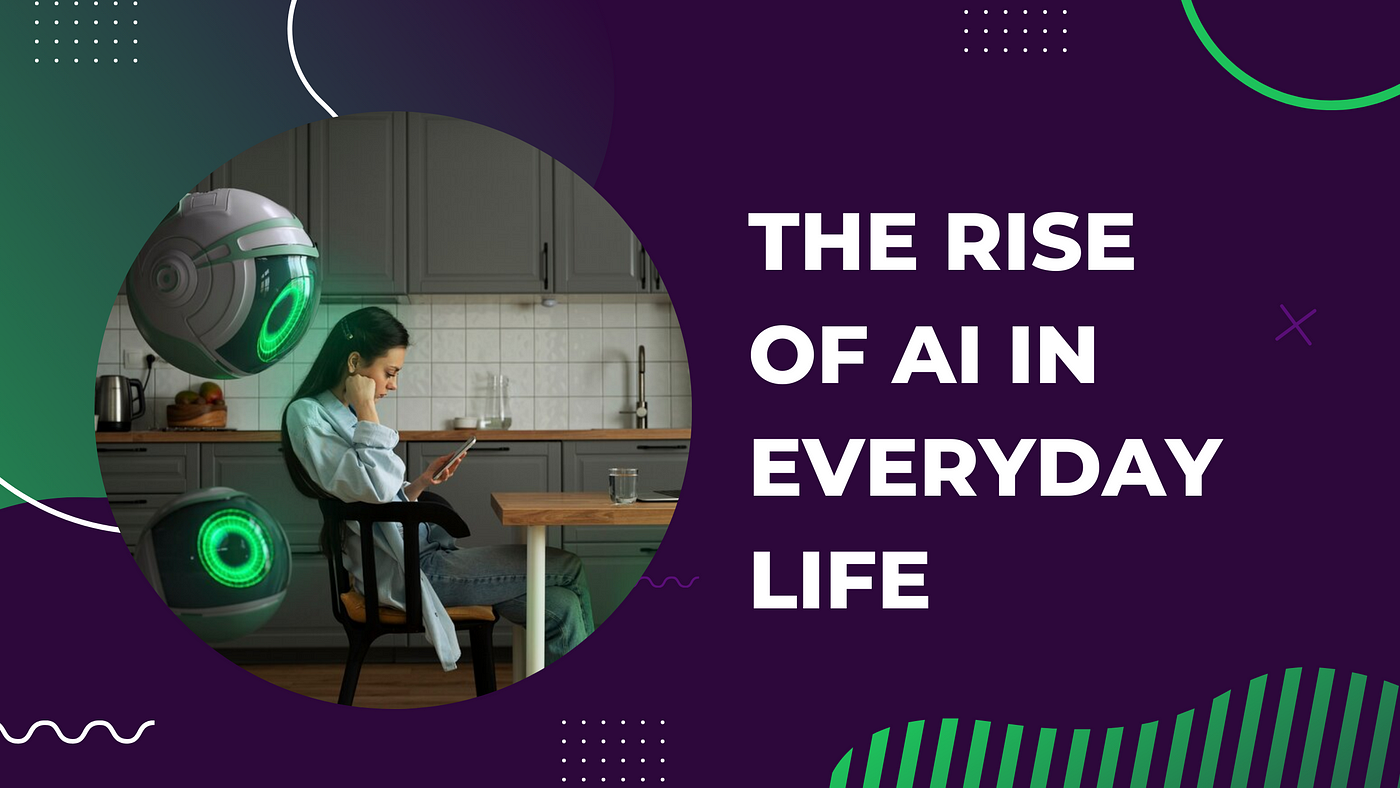Understanding Inflation
Although the term “inflation” is commonly used in economic discourse, its meaning is frequently nuanced and complex. Fundamentally, inflation is the overall rate of increase in the prices of goods and services, which gradually reduces one’s purchasing power. By examining the causes, impacts, and potential remedies of inflation, this article seeks to offer a thorough understanding of the phenomenon.

1. Defining Inflation
The rise in the Producer Price Index (PPI) or Consumer Price Index (CPI), which charts the yearly variations in the prices of a basket of goods and services, is used to calculate inflation. It shows the percentage increase in cost between a base year and a collection of products and services. Policymakers and central banks keep a careful eye on inflation because it affects growth and stability in the economy.

2. Causes of Inflation
There are many different reasons why inflation may occur, however economists typically classify these reasons into three basic categories:
a. Pull-Inflation on Demand
Demand-pull inflation is the result of the economy’s overall demand exceeding its overall supply. Because consumers are willing to pay more for goods and services as a result of this mismatch, manufacturing costs rise and prices rise as well. Among the elements causing demand-pull inflation are:
Economic Growth: When the economy is expanding quickly, there is a rise in business investment and consumer spending, which raises the demand for products and services.
Government Spending: Higher government spending has the potential to raise inflationary pressures by increasing aggregate demand.
Monetary Policy: By encouraging borrowing and spending, low interest rates and expansionary monetary policies can raise demand.
b. Push-Inflation at Cost
Increasing production costs, which companies pass on to customers in the form of higher prices, are the main cause of cost-push inflation. The following are important causes of cost-push inflation:
Price increases for raw materials: Rising production costs can result in higher final product pricing. Examples of these raw material price increases are those for metals and oil.
Labor Charges: Increased production costs for companies might result in higher prices for consumers due to increased wages and benefits.
Events that upset supply networks include pandemics, natural disasters, and geopolitical wars. These disruptions drive up production costs and lead to inflation.
c. Inflation Built-In
Wage-price inflation, sometimes referred to as “built-in inflation,” is the result of companies raising prices to compensate for increased labor costs while employees demand raises to keep up with growing living expenses. This sets up a feedback cycle where prices and salaries keep going up. Among the contributing elements are:
Expectations: If people expect prices to rise, they may demand higher wages to keep up with anticipated inflation, which can lead to further price increases.
Union Negotiations: Strong labor unions can negotiate higher wages, which businesses may offset by increasing prices.
3. Effects of Inflation
Different stakeholders are affected differently by inflation, which has a variety of repercussions on the economy:
a. Effect on Customers
Diminished Purchasing Power: When prices rise, people can buy less with the same amount of money because the real worth of money declines. Living standards may be impacted by this, especially for people with fixed incomes.
Budgetary Challenges: Increasing costs can put a pressure on household spending plans, which may force alterations to lifestyle choices and spending patterns.
b. Effect on firms Increasing Costs:
If firms are unable to pass on the costs to customers, then increasing production costs may eat away at their profit margins.price Strategies: In order to combat the effects of inflation, businesses may need to modify their price policies and bargain with suppliers.
c. How It Effects the Economy
Interest Rates: In order to calm the economy and reduce inflation, central banks may decide to raise interest rates in response to rising inflation. Interest rate increases can affect borrowing and investment decisions as well as delay economic growth.
Investment decisions may be impacted by inflation’s ability to breed uncertainty. Commodities or real estate are examples of assets that investors may look for as a hedge against inflation.
d. Effect on Investments and Savings
Erosion of Savings: If interest rates on savings accounts do not keep up with inflation, inflation may significantly reduce the value of savings.
Returns on Investment: The real returns on investments can be impacted by inflation. During times of strong inflation, fixed-income instruments, like bonds, may provide lower actual returns.
4. Solutions and Strategies to Manage Inflation
It takes a mix of tactics and policy changes to combat inflation. There are several ways that individuals and policymakers can manage and lessen the effects of inflation:
Interest rate adjustments are a part of monetary policy. By raising interest rates, central banks can lower borrowing and spending, which will calm the economy and lessen inflationary pressures.
Open Market Operations: In order to lower the money supply and raise interest rates, central banks can sell government assets, which will aid in containing inflation.
a. Fiscal Policy:
Government Spending Cuts can lower aggregate demand and aid in maintaining inflation control. On the other hand, focused expenditure in profitable sectors can promote economic expansion without raising inflation.
Tax Policy: Tax rates can be changed to affect corporate investment and consumer expenditure, which can assist control inflationary pressures.
b. Policy on the Supply Side
Enhancing productivity through infrastructure, education, and technology investments can help reduce production costs and lessen the impact of cost-push inflation.
Regulatory Reforms: Lowering manufacturing costs and assisting in price stabilization can be achieved by streamlining rules and increasing supply chain effectiveness.
c. Individualized Money Management Techniques
Investing in Inflation-Protected Assets: Securities, commodities, and real estate are examples of assets that people might purchase to protect themselves against inflation.
Investing Portfolio Diversification: Investment portfolio diversification can assist control inflationary risk and maintain asset class balance.
Conclusion
A complicated and multidimensional economic issue, inflation has a big impact on firms, consumers, and the economy as a whole. Demand-pull, cost-push, and built-in inflation are its causes. By understanding these factors, stakeholders can better manage its effects and create effective strategies. Even while inflation might be problematic, it can be controlled and economic stability can be preserved with the help of sensible fiscal and monetary policies as well as individual financial planning techniques. A sophisticated grasp of inflation is still necessary for long-term economic health and well-informed decision-making as economies change and encounter new difficulties.










Leave a Reply